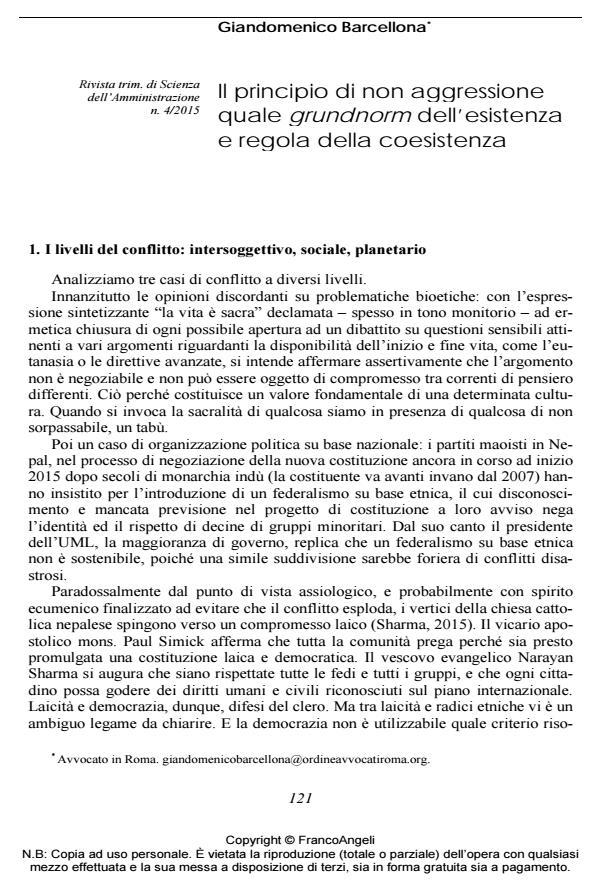The principle of non-aggression as Grundnorm of existence and rule of coexistence
Journal title RIVISTA TRIMESTRALE DI SCIENZA DELL’AMMINISTRAZIONE
Author/s Giandomenico Barcellona
Publishing Year 2016 Issue 2015/4
Language Italian Pages 19 P. 121-139 File size 107 KB
DOI 10.3280/SA2015-004005
DOI is like a bar code for intellectual property: to have more infomation
click here
Below, you can see the article first page
If you want to buy this article in PDF format, you can do it, following the instructions to buy download credits

FrancoAngeli is member of Publishers International Linking Association, Inc (PILA), a not-for-profit association which run the CrossRef service enabling links to and from online scholarly content.
The ideological root of social violence lies in the thought that values shared amongst members of a social group are superior to the value of individual liberty. That the force through which these values are imposed is channeled through electoral rituals in democratic regimes, and that it finds formal organization in the law, does not alter its essentially violent nature. To obtain an open, pluralistic, and peaceful society, group membership must be viewed as a freely chosen, aggregative phenomenon - not as the defining place of a collective identity that is to form the basis of a social order. The uniqueness of each human being is the only unifying matter and the only truly sacred principle is that of non-aggression; in the bestowing to the free choices of all a sacred and intangible value until the freedom of another is abused. This is the true sense of the sacredness of life: leaving each individual free to choose. Social violence of an ideological mould will disappear only when the formation of an identity is recognized as an individual process, when there is a real and genuine religion of freedom seen as an unsurpassable taboo, and when the coexistence is built on the mithology individual liberty. All else is violence.
Keywords: Collective identity, group membership, ideology, authority, imposition, violence, individual identity, non-aggression, coexistence, mithology of liberty
Giandomenico Barcellona, Il principio di non aggressione quale grundnorm dell’esistenza e regola della coesistenza in "RIVISTA TRIMESTRALE DI SCIENZA DELL’AMMINISTRAZIONE" 4/2015, pp 121-139, DOI: 10.3280/SA2015-004005